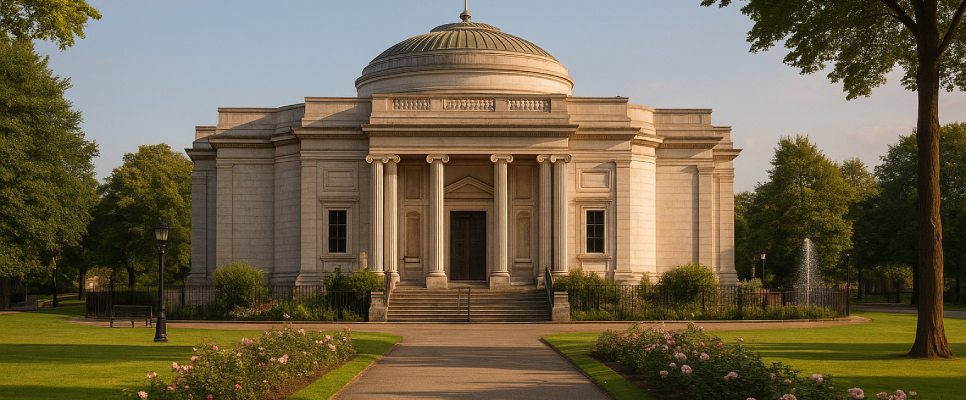The atmospheric Victorian model village tucked away on the Wirral, between Liverpool and Chester has an impressive collection of landmarks and attractions. Port Sunlight Village is beautifully preserved and has gardens, houses, and museums that are maintained to look exactly as when they were first built, over a hundred years ago in Victorian England.
Here, we will look through all the main attractions that keep bringing tourists and history buffs to Port Sunlight Village. Use it as a checklist, or as a guide to see what’s worth seeing, and then you can work them into your itinerary for when you visit Port Sunlight.

The Lady Lever Art Gallery
Arguably, the best place to start any trip to Port Sunlight village is at the Lady Lever Art Gallery. The neoclassical stone building is impossible to miss, it is a brisk walk from Bebington train station, which would be the stop before or after Port Sunlight depending on whether you are travelling from Liverpool or Chester.
This art gallery has a memorable collection of Victorian paintings, turn of the century furniture, Chinese ceramics and world famous Pre-Raphaelite artworks. It has an extensive collection of both local and exotic artefacts, echoing the great worldly intrigue of Victorian England.
Port Sunlight Museum
The Port Sunlight Museum gives you a comprehensive background to how the village came to be. Learning about the history of Port Sunlight, you get a glimpse into Victorian England and how the industrial worker settlement flourished.
It is also the story of the Unilever brand, from its humble beginnings as a Victorian soap manufacturer, and how it developed into a world renowned goods manufacturer. You can see these stories through archived photos, early advertising posters, and detailed accounts of the planning and construction of Port Sunlight.
The Worker’s Cottage
Right next to the museum, you will find the Worker’s Cottage. This is a more hands on experience, with immersive exhibits to give you an idea of what it was like to live in the village during the late 19th and early 20th centuries.
It is a great contrast to the outdoor grand architecture and aesthetic art gallery. You are getting real life experiences in the Worker’s Cottage, and a genuine glimpse into how the model community worked in this settlement.

Gladstone Theatre
Gladstone Theatre is one of the oldest continuously operating theatres in the Wirral. It was built as a source of entertainment for the workers who lived at Port Sunlight, but the theatre is still active today, with occasional comedy nights and plays throughout the calendar year.
It is worth taking a look around, and if you get lucky or plan ahead, you may just catch a local performance to round off a day of exploration.
The Lyceum Club
Originally built as a school and social centre, the Lyceum Club was the beating heart of the village. It continues to serve as a community hub today, and opens for heritage events or exhibits. The building itself is a marvel of the time, with classical symmetry and meticulous brickwork, a perfect example of the high level craftsmanship of Victorian England.
SoapWorks
SoapWorks is a newer and more interactive experience that teaches you all the ins and outs of the soap business. It is located in the village’s schoolroom at the Lyceum, and has great education programmes for children.
You explore the science, importance, and story behind soap. The museum also explores the story of William Lever, and how he went from selling soap to building the world’s first multinational company.
Gardens and Leafy Village Streets
Beyond museums and galleries, the best way you can explore Port Sunlight is just to wander through the leafy streets and lose yourself in the model village. It has Victorian landscaped gardens, such as The Dell and The Diamond, which have hidden monuments and landmarks to explore.
Every corner of the village feels different, and that’s because no two houses were built the same. There are over 900 Grade II listed buildings in Port Sunlight, and these were constructed by over 30 architects of the time. It lends itself to excellent walks and picturesque streets lined with Victorian houses, perfect for tranquil city walking.
